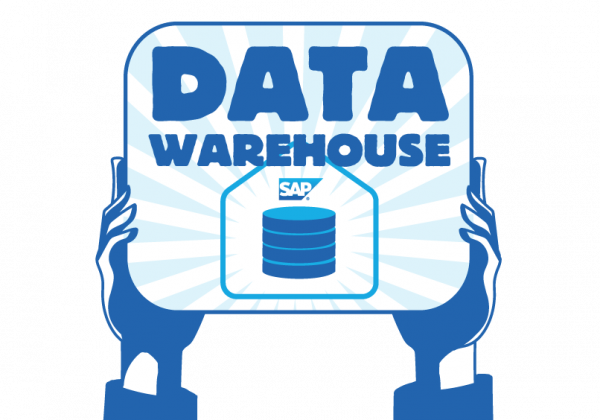Launched in March 2023, the SAP Datapshere cloud solution is a business data factory: a data factory adapted to business contexts and therefore capable of manipulating business objects.
SAP Datasphere is an evolution of the former SAP Data Warehouse Cloud (DWC) solution, whose functionalities it takes over. However, it offers new services that have been added to DWC to respond more effectively to data management and business intelligence needs.
SAP Datasphere is an environment to which all corporate data will naturally converge, to be characterized, transformed, conformed, catalogued, enriched, anonymized and distributed… Possibly outside the organization’s walls, through the solution’s integrated marketplace.
A rapidly evolving cloud data factory
SAP Datasphere also offers an ETL, derived from the SAP Data Intelligence solution. The first piece of good news is that, by the end of the year, 90% of SAP Data Intelligence functionalities will be integrated into SAP Datasphere, including transformation workflows.
Other functional advances are also expected:
- Enhanced authorization management, enabling, for example, the definition of authorizations covering multiple data spaces.
- Multi-factor analyses, capable of analyzing data from different domains, with several cross-functional dimensions.
- Tools providing a better understanding of the quality of SAP BW data to be migrated to SAP Datasphere.
SAP Datasphere also integrates data cataloging concepts, enabling business definitions to be applied to data. This business aspect is sometimes difficult to preserve when exchanging data with non-SAP systems.
A partnership signed with Collibra will result in the supply of a bidirectional connector capable of transmitting business data while respecting the SAP and Collibra catalogs. The business context of the information will thus be preserved.
A bidirectional connector will also allow contextualized data to be injected into the Google BigQuery cloud data warehouse. Other connectors will be delivered for ” Lakehouses ” from Databricks and DataRobot’s artificial intelligence platform.
SAP Datasphere is based on the SAP Business Technology Platform (SAP BTP), which includes robust security capabilities.
Why use SAP Datasphere when you can model in SAP Analytics Cloud (SAC)?
SAP Datasphere offers a wider range of modeling possibilities than SAC. Cross-application analysis scenarios can be modeled effectively and efficiently in SAP Datasphere.
It’s also worth remembering that SAC’s main use cases are BI and planning, not modeling, which is one of SAP Datasphere’s main focuses.
SAP Datasphere offers a reinforced semantic layer, enabling users to manipulate and transform data autonomously (self-service data modeling), under the governance of the IT department. In the course of 2024, we expect to see further advances in the no-code sector, to further reduce the need for scripting.
However, a new technology is set to turn the HMI world upside down: intelligent assistants.
Recently announced by SAP, SAP Joule generative AI should soon be integrated into cloud solutions.
SAP Datasphere users should first discover Joule through SAP Analytics Cloud (SAC). By the end of 2024, 100% of SAC workflows will be created using this conversational generative AI.
Joule is also currently being considered for integration within SAP Datasphere. In addition to facilitating the management of the solution, this AI could replace scripting in the definition of ETL flows, making users ever more efficient and autonomous.
Ultimately, SAP Datasphere would feed SAP Analytics Cloud, making self BI accessible to all.
BW/4HANA or SAP Datasphere – which solution should you choose to manage your company’s data?
When choosing a new tool, it’s important to assess the specific requirements that will enable you to select the solution that best meets your company’s needs. But from a strategic point of view, SAP’s main focus is on SAP Datasphere.
This solution offers, for both SAP and non-SAP data, a single service for data integration, cataloging, semantic modeling, data warehousing and workload virtualization.
For future customers who don’t yet have a data warehouse, or even those with complex modeling requirements who want to work with an SAP tool, it makes sense to move directly to SAP Datasphere.
Older versions of SAP BW are mature tools, known for their reliability. However, many of them are already out of maintenance.
For customers who don’t (yet) want to move their hosting to the cloud, SAP BW/4HANA may still be the answer. However, it should be noted that the end of maintenance for this solution is scheduled for 2040.
SAP BW/4HANA is a robust tool and can form the basis of large-scale, complex enterprise data warehouse solutions.
Customers with versions below SAP BW/4HANA will need to migrate to Datasphere or BW/4HANA in the future.
Below is a parallel between the two solutions:
| SAP Datasphere | SAP BW/4HANA | |
| SAP innovation | Data catalog | N/A |
| Data hosting | Cloud | Cloud or On-Premise |
| Rating | Flexible | Fixed |
| Self-service data modeling | YES | NO |
SAP Datasphere: How Applium’s BI teams feel about it
As with any new tool, there is little feedback yet.
Some features commonly used in older versions of BW are not included in SAP Datasphere, for example:
- BW queries
- Certain BW objects: DSO, Cubes…
Due to frequent updates, the user interface will have to evolve over time, which may be restrictive for users who will have to adapt to changes in ergonomics.
Despite these few uncertainties due to the tool’s youth, the perspective that SAP wants to give Datasphere puts stars in our eyes:
- It’s a complete product, and its pricing (close to that of SAP DWC) is flexible according to workload.
- The tool is compatible with two essential reporting solutions: SAC and Power BI.
- It can also be used by non-technical consultants, thanks to its self-service data modeling.
In a context where the data fabric is becoming essential when it comes to data management, with Datasphere we are confident that SAP will be able to maintain its technological lead.

